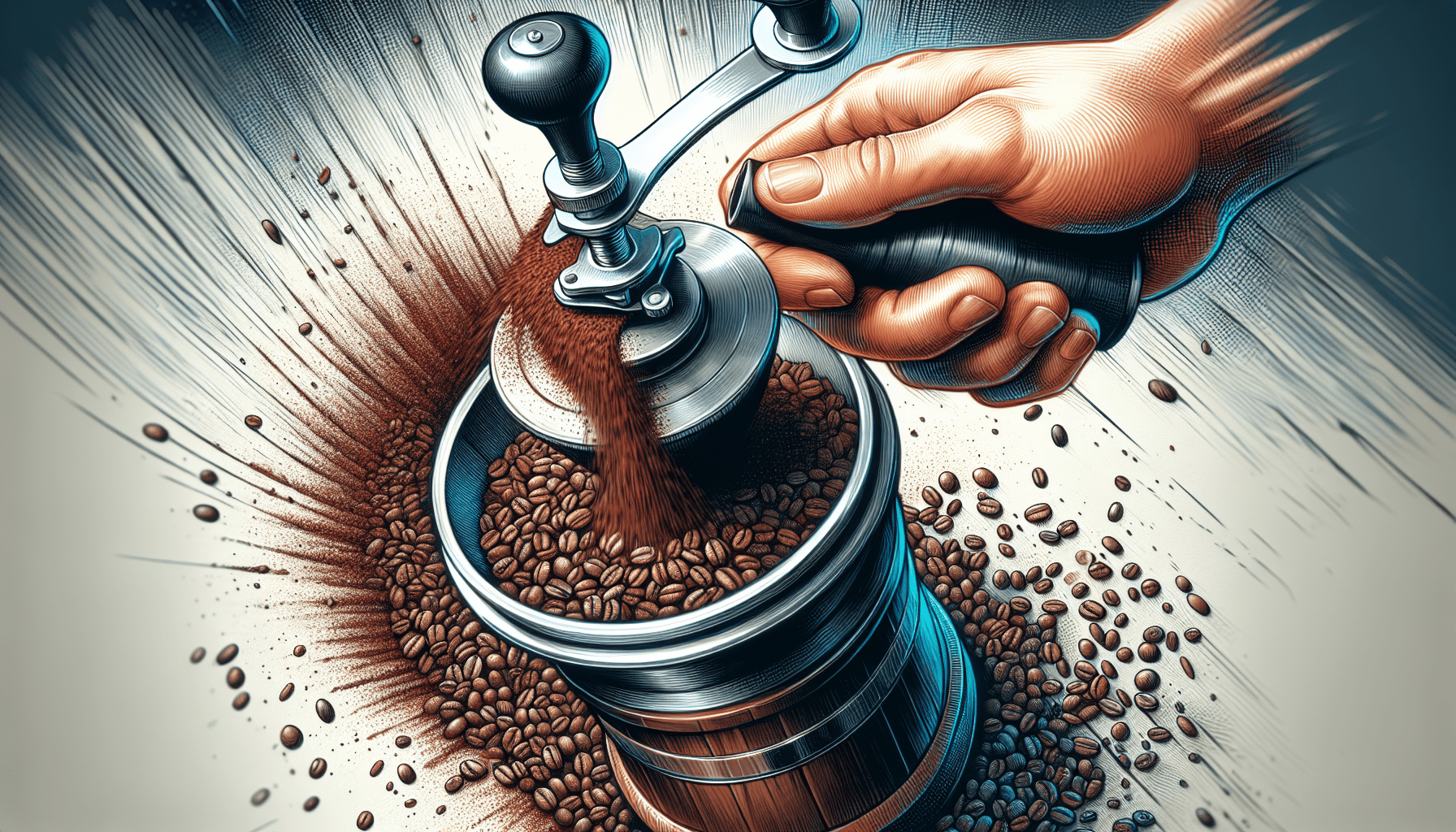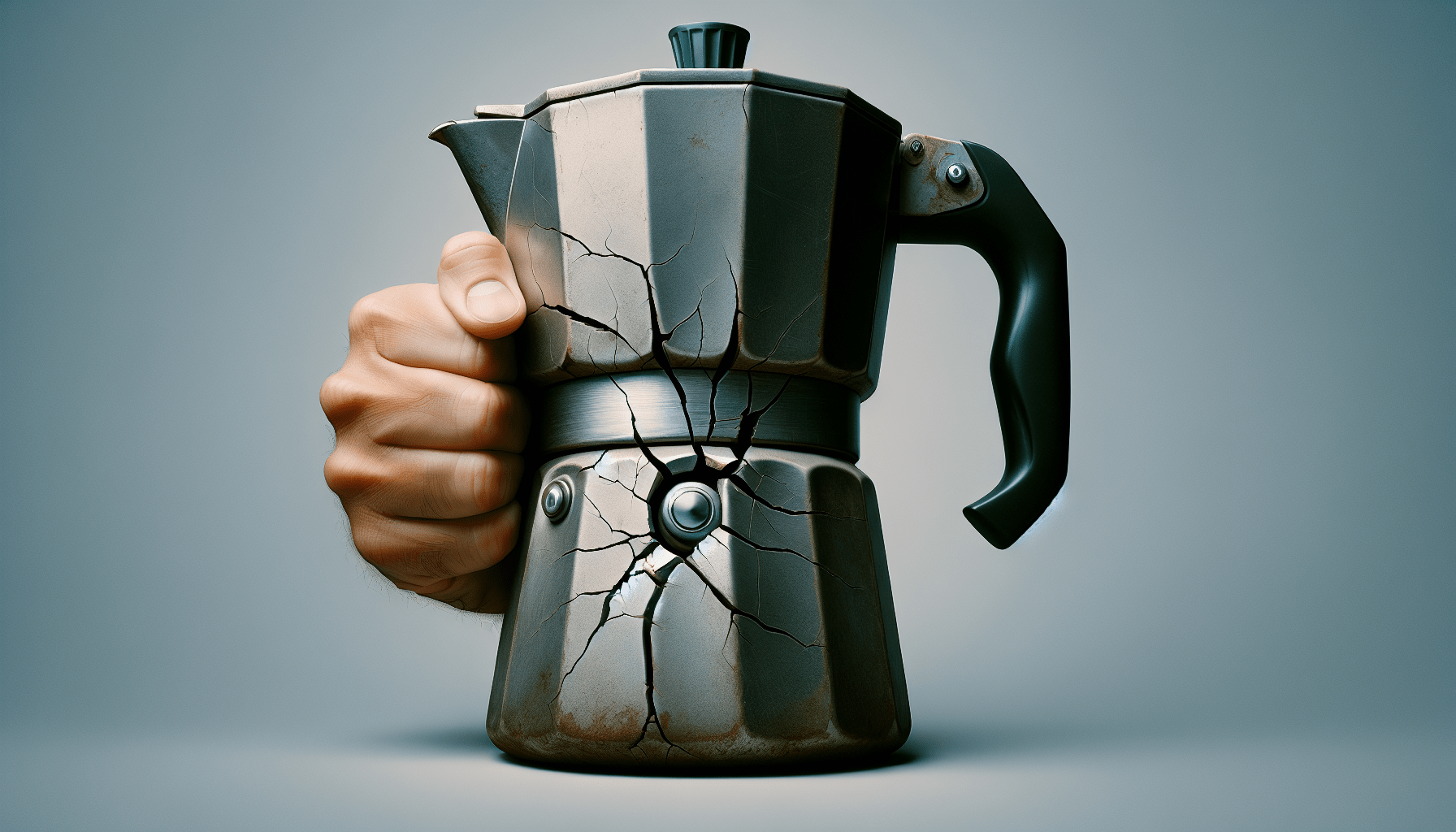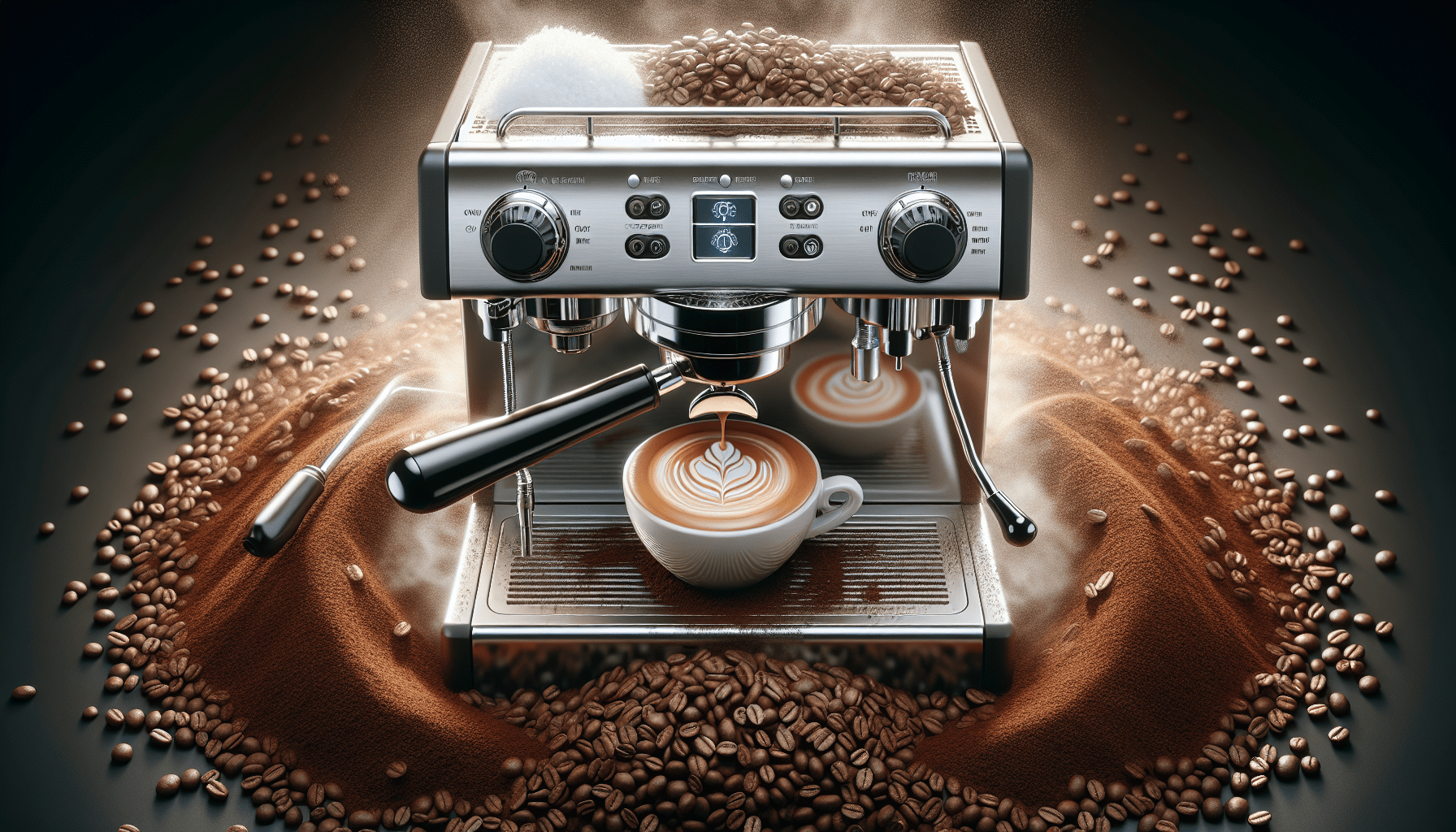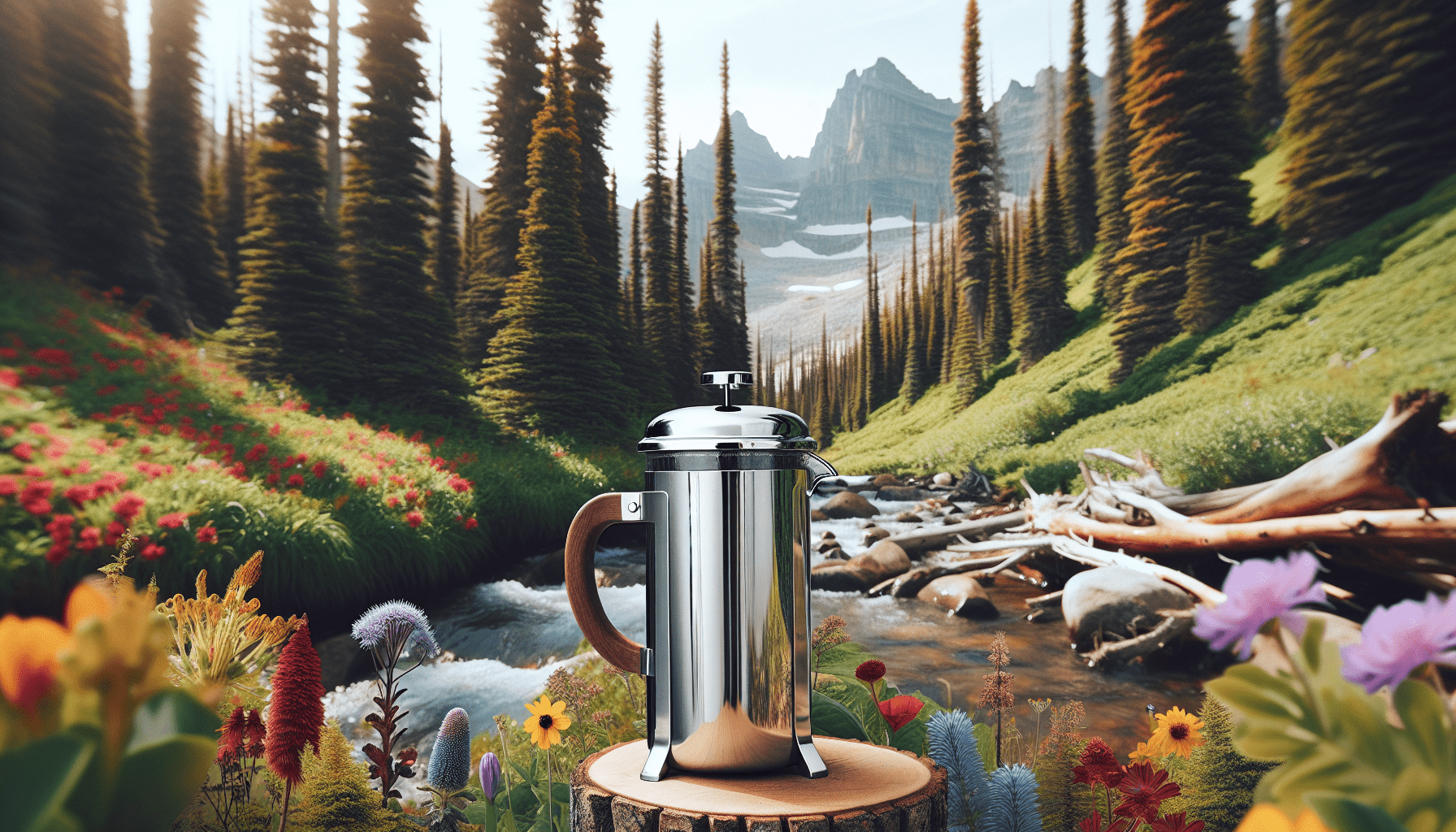So, you’ve just started brewing your own coffee at home and you’ve realized that there’s more to it than just pressing a button on your trusty coffee machine. You’ve dabbled in the world of pour-over coffee and now you’re wondering, what’s the ideal brewing ratio for that perfect cup? Well, fear not, my coffee-loving friend, because we’re here to help you unlock the secret to the perfect pour-over brew. In this article, we’ll explore the importance of finding the right brewing ratio and uncover tips to help you achieve coffee greatness in the comfort of your own kitchen. So grab your favorite mug, sit back and get ready to take your pour-over coffee game to the next level.
Understanding Brewing Ratio
Brewing ratio refers to the proportion of coffee grounds to water used in the brewing process. It is a crucial aspect of making a delicious cup of pour-over coffee. Understanding and mastering the brewing ratio allows you to control the strength and flavor of your coffee, ultimately enhancing your coffee experience.
Definition of Brewing Ratio
Brewing ratio is expressed as a numerical ratio, for example, 1:15 or 1:20. The first number in the ratio represents the weight of coffee grounds, while the second number represents the weight of water. For instance, a brewing ratio of 1:15 means using 1 gram of coffee for every 15 grams of water. This ratio determines the concentration of the coffee and plays a significant role in achieving the desired taste.
Importance of Brewing Ratio
Getting the brewing ratio right is essential because it directly impacts the taste and strength of your coffee. Different brewing ratios result in varying degrees of extraction, affecting the overall flavor profile. By understanding and manipulating the brewing ratio, you have the ability to create a cup of coffee that perfectly suits your personal preferences. It allows you to control factors such as strength, body, and acidity, ensuring that each brewing session yields a consistently satisfying cup of pour-over coffee.
Factors Affecting Brewing Ratio
Several factors influence the ideal brewing ratio for pour-over coffee. Understanding these factors helps you adjust and optimize the ratio based on your specific circumstances and desired flavor profile.
Coffee Bean Quality
The quality and characteristics of the coffee beans play a significant role in determining the ideal brewing ratio. Different beans have different levels of solubility and flavor compounds that require specific extraction levels to release their full potential. High-quality beans may require a different brewing ratio compared to lower-quality ones. Experimenting with your preferred beans and adjusting the brewing ratio accordingly can help you achieve the best results.
Grind Size
The size of your coffee grind also influences the brewing ratio. Different brewing methods require specific grind sizes, and adjusting the brewing ratio becomes necessary to accommodate these variations. Finer grinds typically require a smaller brewing ratio, as they extract faster and more intensely, while coarser grinds typically require a higher brewing ratio to achieve a balanced cup of coffee. Matching the grind size to the brewing ratio ensures an optimal extraction and prevents over or under extraction.
Water Quality
The quality of water used in the brewing process affects the flavor of the coffee. Water with high mineral content can alter the extraction and taste of the coffee. You may need to adjust your brewing ratio if you’re using hard water or water with specific mineral compositions. Experimentation is key to finding the right balance between your brewing ratio and water quality to produce the best-tasting cup of pour-over coffee.
Brewing Method
Different brewing methods require different brewing ratios to achieve the desired strength and flavor. Pour-over, Aeropress, French press, and Chemex all have their own optimal brewing ratios that complement their unique brewing processes. Understanding the nuances of each brewing method and how they interact with the brewing ratio allows you to adapt and achieve the best possible flavor characteristics for each method.
Standard Brewing Ratios
While personal preferences may vary, several standard brewing ratios are widely used and provide a starting point for experimenting and adjusting to your taste preferences.
Golden Ratio (1:15)
The golden ratio is a commonly used brewing ratio in the specialty coffee world. It offers a balanced cup with a medium strength and allows the flavors of the coffee to shine through. Using this ratio, you would use 1 gram of coffee for every 15 grams of water. This ratio is a good starting point for most coffee beans and can be adjusted based on your preferences.
Strong Brew (1:12)
If you enjoy a stronger and more intense cup of coffee, a brewing ratio of 1:12 may be more suitable. This higher coffee-to-water ratio results in a bolder flavor profile and a more robust cup. It is important to note that increasing the coffee amount may result in a shorter brew time and may require adjustments to the grind size and water temperature.
Weak Brew (1:20)
On the other end of the spectrum, a weaker brewing ratio of 1:20 is suitable for those who prefer a milder flavor profile or want to highlight the delicate nuances of certain coffee beans. This ratio yields a lighter cup with a more subtle taste. It’s important to note that a weaker brew may require adjustments to brewing time and grind size to ensure proper extraction and avoid a diluted flavor.
Experimenting with Brewing Ratios
One of the joys of pour-over coffee is the ability to experiment with brewing ratios to customize your cup according to your preferences. By adjusting the brewing ratio, you can fine-tune the strength and flavor profile of your coffee, creating a unique and personalized brewing experience.
Adjusting Strength and Flavor
By altering the brewing ratio, you have control over the strength and intensity of your coffee. If you prefer a more robust cup, increase the coffee-to-water ratio, while those who enjoy a milder cup can play with a weaker ratio. This experimentation allows you to discover the perfect balance and unlock the full potential of your coffee beans.
Using Different Coffee Beans
Different coffee beans have distinct flavor profiles, and experimenting with different brewing ratios can help highlight their unique characteristics. Some beans may require a slightly stronger or weaker brewing ratio to fully express their flavor notes. By experimenting with various ratios, you can find the perfect fit for each type of coffee bean you use.
Adapting to Personal Preference
Personal taste preferences are subjective, and therefore, the ideal brewing ratio can vary from person to person. Some individuals prefer a strong and bold cup, while others may lean towards a lighter and more delicate profile. Adjusting the brewing ratio allows you to adapt your coffee precisely to your liking and enjoy a cup tailored to your personal preferences.
Achieving the Best Pour-over Flavor
Achieving the best pour-over flavor is a delicate balance that can be achieved through thoughtful consideration of the brewing ratio, extraction, and consistency.
Balancing Extraction and Strength
Optimal extraction is crucial for producing a flavorful and well-balanced cup. Adjusting the brewing ratio allows you to control the extraction process and strike the perfect balance between strength and flavor. By altering the ratio, you can fine-tune the extraction, ensuring that the coffee is neither under-extracted nor over-extracted.
Maintaining Consistency
Consistency is key to replicating and enjoying your preferred pour-over flavor consistently. Once you have found your ideal brewing ratio, it is important to use accurate measurements and maintain consistency in your technique. Consistency in your pour, grind size, water temperature, and brewing time will contribute to a more dependable cup of coffee every time.
How to Measure Brewing Ratios
Measuring brewing ratios accurately is essential to achieve consistent results. There are two primary methods for measuring brewing ratios: using a scale and calculating by volume.
Using a Scale
Using a scale is considered the most accurate and precise method for measuring brewing ratios. By weighing the coffee and water in grams, you can achieve precise ratios. A kitchen scale with a tare function allows you to measure the coffee and water separately without the need to subtract the weight of the container.
Calculating by Volume
If you do not have access to a scale, you can calculate brewing ratios by volume. Using measuring cups or spoons, you can measure the coffee and water by volume. It’s important to note that this method may not be as precise as using a scale, as different coffee grounds and water densities can affect the accuracy of the measurement.
Alternative Brewing Methods and Ratios
While our focus has been on pour-over coffee, other brewing methods also have their own optimal brewing ratios.
Aeropress
The Aeropress brewing method utilizes a lower brewing ratio compared to pour-over. With an Aeropress, a ratio of 1:17 or 1:18 is commonly used. The shorter brew time and higher pressure of the Aeropress contribute to a richer and more concentrated cup.
French Press
A French press requires a coarser grind and a longer brewing time. The brewing ratio for French press coffee is typically around 1:12 or 1:16. This ratio allows for a stronger cup with more body and a slightly different flavor profile.
Chemex
Chemex brewing requires a coarser grind and longer brew time. The brewing ratio for Chemex coffee is often around 1:15 or 1:16. The unique design of the Chemex allows for a cleaner and more delicate cup, highlighting the subtle flavors of the coffee.
Brewing Ratio Tips and Tricks
To help you navigate the world of brewing ratios, here are some useful tips and tricks to keep in mind:
Experiment and Iterate
Finding your ideal brewing ratio is a personal journey. Don’t be afraid to experiment with different ratios and adjust accordingly to your taste preferences. Keep notes of each variation and make small changes until you find your perfect ratio.
Recording Results
Keeping a brewing journal can be invaluable in your quest for the ideal cup. Record the brewing ratios, grind sizes, water temperatures, and any other variables you test. This record helps you understand the cause and effect relationships between different brewing parameters and the resulting flavors.
Seeking Professional Advice
If you find yourself struggling or want to dive deeper into the world of brewing ratios, consider seeking advice from professional baristas or coffee experts. They can provide valuable insights and guidance based on their experience and expertise.
Common Mistakes in Brewing Ratios
Avoiding common mistakes is crucial in achieving a consistently satisfying cup of pour-over coffee. Here are a few common pitfalls to be mindful of:
Using Incorrect Measurements
Inaccurate measurements can throw off the brewing ratio and result in an imbalanced cup. Ensure that you are using precise measurements by using a scale or proper measuring tools to achieve the desired ratios.
Inconsistent Water Temperature
Water temperature greatly impacts the extraction process. Inconsistent water temperature, either too hot or too cold, can lead to under or over-extraction, ultimately affecting the flavor of the coffee. Use a reliable kettle with a built-in thermometer to ensure consistency in water temperature.
Neglecting Brew Time
Brew time is an essential element in achieving the desired flavors and strength. Neglecting to control the brew time can lead to inconsistent results. Use a timer and maintain consistency in your brewing time to achieve a reliably delicious cup.
Conclusion
There is no one-size-fits-all when it comes to the ideal brewing ratio for pour-over coffee. It is a personal journey of experimentation and discovery. By understanding the factors that affect the brewing ratio, experimenting, and fine-tuning based on personal preferences, you can unlock the true potential of your coffee beans and brew a cup of pour-over coffee that satisfies your taste buds. So, grab your favorite beans, adjust the brewing ratio to your liking, and embark on the delightful adventure of finding your ideal pouring-over ratio.




